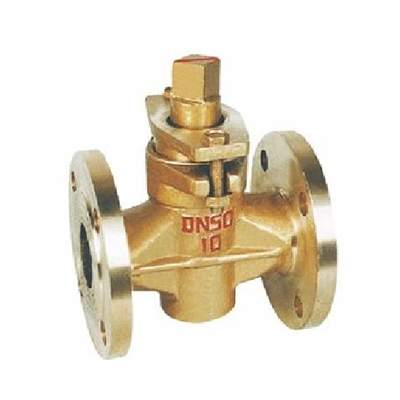Welcome to My Blog!
Before we dive into the content, if you’re interested in our products or have any questions, please feel free to visit our Contact Us page on the website. Our team is ready to assist you with inquiries, orders, or any support you may need.
Now, let’s get started on our journey together. I hope you find the content here insightful, engaging, and valuable.
Selecting the right plug valve for an industrial system is crucial for ensuring reliable flow control, system efficiency, and long-term durability. Plug valves are widely used in industries such as oil and gas, chemical processing, water treatment, power generation, and mining due to their simple design, fast quarter-turn operation, and capability to handle abrasive or corrosive fluids. Choosing the wrong valve can result in operational inefficiencies, frequent maintenance, or even costly system failures. This comprehensive guide explains how to select the ideal plug valve for your industrial application.
What Is a Plug Valve?

A plug valve is a quarter-turn valve that uses a cylindrical or conically tapered plug to regulate the flow of fluids. The plug contains one or more hollow ports, allowing fluid to pass when aligned with the pipeline. Rotating the plug 90 degrees either fully opens or fully closes the valve.
Key Features of Plug Valves:
- Compact and simple design with minimal moving parts
- Quick quarter-turn operation for fast shutoff
- Reliable sealing for high-pressure and high-temperature systems
- Suitable for abrasive, viscous, and corrosive fluids
Plug valves are often available in multi-port configurations, allowing flow to be diverted to different lines without multiple valves, which reduces system complexity and saves installation space.
Factors to Consider When Choosing a Plug Valve
Fluid Type and Application
Understanding the type of fluid is the first step:
- Clean liquids, oils, or gases: Standard plug valves work effectively.
- Corrosive chemicals: Stainless steel or PTFE-lined plug valves are recommended.
- Slurries or abrasive fluids: Eccentric or lubricated plug valves reduce wear and prevent jamming.
- High-viscosity fluids: Ensure the plug valve can handle the fluid’s resistance to flow.
Material Selection
The material of the valve body, plug, and seats significantly affects durability:
- Cast Iron or Ductile Iron: Cost-effective for low-pressure, non-corrosive fluids.
- Carbon Steel: Ideal for moderate to high-pressure industrial applications.
- Stainless Steel or Alloy Steels: Suitable for corrosive or high-temperature fluids.
- PTFE or PFA Linings: Provide chemical resistance for aggressive industrial environments.
Selecting the appropriate material ensures longer service life and reduces the risk of corrosion or erosion.
Pressure and Temperature Ratings
Verify that the valve’s pressure and temperature ratings meet or exceed your system’s requirements. Exceeding these limits can lead to leaks, deformation, or catastrophic failure. Industry standards like API 6D and ASME B16.34 provide guidance for selecting valves that meet operational pressures and temperatures.
Port Configuration
- Two-way plug valves: Ideal for standard on/off applications.
- Multi-port plug valves: Allow flow diversion to multiple pipelines, simplifying system design.
- Full bore vs reduced bore: Full bore minimizes pressure drop, while reduced bore reduces valve weight and cost.
Correct port configuration improves system efficiency and reduces maintenance.
Type of Plug Valve
- Lubricated plug valves: Reduce friction between the plug and body, suitable for abrasive and high-pressure fluids.
- Non-lubricated plug valves: Require minimal maintenance and no lubrication, suitable for clean or chemical applications.
- Eccentric plug valves: Reduce plug-to-seat friction, ideal for slurries or wastewater applications.
- Expanding plug valves: Provide zero leakage for critical high-pressure or hazardous systems.
Actuation Method
Choose an actuation method based on valve size, frequency of operation, and automation requirements:
- Manual handles or levers: Suitable for small- to medium-sized valves in systems with limited operation cycles.
- Gear-operated valves: Reduce operating torque for larger valves, ensuring easier manual control.
- Automated actuators (electric or pneumatic): Enable remote control and integration into automated process systems.
Maintenance and Serviceability
- Ease of disassembly: Important for valves in abrasive or corrosive services.
- Lubrication: Lubricated valves require regular sealant to prevent sticking.
- Inspection: Regular checks of seats and plugs prevent leaks.
- Replacement parts: Readily available parts minimize system downtime.
Proper maintenance not only extends the valve’s lifespan but also ensures safety and reliability in critical industrial applications.
Compliance with Standards
Ensure the selected plug valve meets relevant industry standards:
- API 6D: Pipeline valves for oil and gas applications
- ISO 5208: Pressure testing standards
- ASME B16.34: Pressure-temperature ratings
- Fire-safe and anti-static designs: Required in hazardous environments
Compliance guarantees safety, operational reliability, and adherence to regulatory requirements.
Industrial Applications of Plug Valves
Plug valves are widely used across multiple industries due to their versatility:
- Oil & Gas Pipelines: Efficient isolation and flow diversion in high-pressure lines
- Chemical Processing Plants: Safe handling of corrosive and viscous chemicals
- Water & Wastewater Systems: Eccentric plug valves prevent debris accumulation
- HVAC Systems: Flow control and switching in industrial or commercial buildings
- Power Generation & Mining: Reliable shutoff in abrasive, high-pressure, or high-temperature systems
These applications demonstrate the plug valve’s ability to handle harsh operating conditions while maintaining system performance.
Maintenance Best Practices for Industrial Plug Valves

- Regular Lubrication: Apply sealants for lubricated types to reduce friction.
- Routine Inspection: Check for wear or leakage in plugs, seats, and body.
- Cleaning: Flush the system periodically to prevent debris buildup.
- Timely Replacement: Replace worn components promptly to avoid operational failure.
Following these practices ensures long-term reliability and reduces maintenance costs.
Conclusion
Choosing the right plug valve for an industrial application requires careful consideration of fluid type, material compatibility, pressure and temperature ratings, port configuration, valve type, actuation method, and compliance with industry standards. By evaluating these factors, industrial operators can optimize flow control, minimize downtime, and extend system life.
FAQ
What is a plug valve used for in industrial applications?
A plug valve controls the flow of liquids or gases in pipelines, offering fast quarter-turn operation and reliable sealing for industrial systems.
How do I choose the right plug valve for my industry?
Consider fluid type, pressure and temperature, material compatibility, port configuration, valve type, and maintenance requirements.
Can plug valves handle abrasive or corrosive fluids?
Yes, plug valves, especially lubricated or lined types, are designed to handle abrasive, viscous, and corrosive fluids safely.
Are plug valves suitable for automated systems?
Absolutely. Plug valves can be operated manually, via gear, or with electric or pneumatic actuators for automated control.
How often should industrial plug valves be maintained?
Regular inspections, lubrication (for lubricated types), and replacement of worn parts are recommended to ensure long-term reliability.
Need Help Choosing the Right Plug Valve?
If you’re unsure which plug valve is best for your industrial application, our valve experts are here to guide you. Contact us today for a personalized consultation to ensure your system operates efficiently, safely, and reliably. Don’t wait—get in touch now to optimize your flow control and protect your operations!
